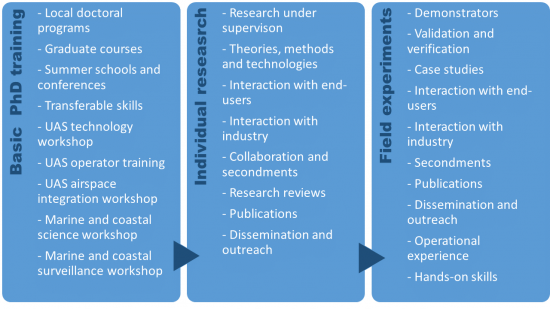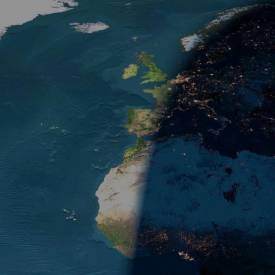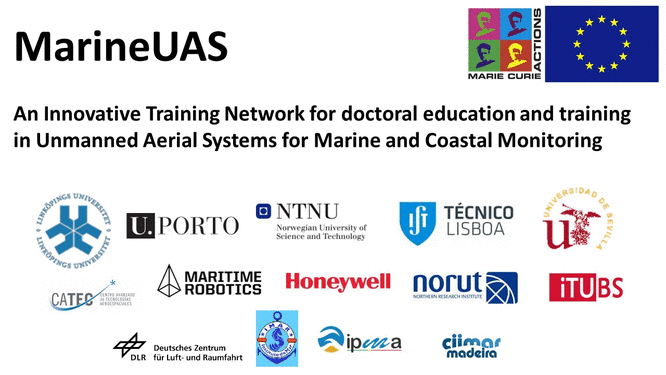MarineUAS Overview
MarineUAS is an EU-funded doctoral program to strategically strengthen research training on Autonomous Unmanned Aerial Systems for Marine and Coastal Monitoring. It is a comprehensive researcher training program across a range of partners in several countries designed to have high impact on the training of individual researchers and their knowledge, skills and their future careers. MarineUAS has established a unique cooperative environment. It takes benefit of the partners' extensive and complementary knowledge, field operational experience, and experimental facilities.
Marine UAS will build a solid foundation for long-term European excellence and innovation in this field by sharing research infrastructures for field testing and disseminating the research and training outcomes and best practice of MarineUAS into the doctoral schools of the partners, as well as by fostering long-term partnerships and collaboration.

Doctoral training in MarineUAS
MarineUAS will recruit and train doctoral fellows via a specially developed and unique training program designed on the EU Principles for Innovative Doctoral Training.
Expanding on the existing doctoral programs it combines cutting edge training-by-research, high quality supervision, complementary and transferable skills training, secondments, hands-on UAS operator training, cross-disciplinary skillset, and a series of network-wide training events that cover UAS technology, rules and regulations, operations in non-segregated airspace, air traffic management, marine and coastal monitoring and science, and the integration of the air, surface and underwater segments.

Why MarineUAS?
European countries have vast coasts and economic zones that go far into the Atlantic and Arctic oceans and are challenging to monitor and manage. The need to protect and manage the vulnerable natural environment and marine resources in a sustainable manner is an important policy that is manifested in European legislation such as the European Strategy for Marine and Maritime Research.
Moreover, the drive towards activities in more remote locations and harsher environment demands new approaches and technologies. A key enabling technology is the increased use of autonomous unmanned aerial vehicle systems (UAS) instead of manned aircraft and satellite-based remote sensing, oftentimes exploiting strong collaborative links with buoys, ships and autonomous marine vehicles for in-situ observations.
UAS offers potential advantages such as high endurance, reduced cost, increased flexibility and availability, rapid deployment, higher accuracy or resolution, and reduced risk for humans and negative impact on the environment.





